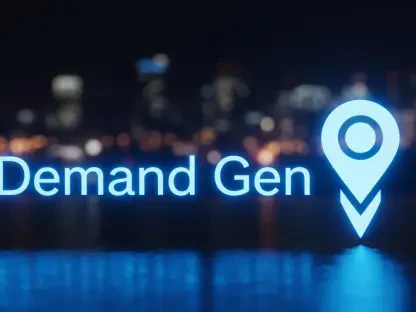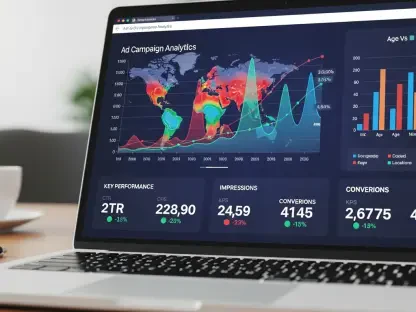Influencer marketing has become a cornerstone of digital strategies in the past few years, providing brands with a unique avenue to reach and engage target audiences authentically. However, as digital landscapes evolve, mere influencer partnerships are insufficient in achieving optimal returns on investment. Enter geo-targeting—a sophisticated marketing tactic that enhances the precision and effectiveness of influencer campaigns by targeting specific geographical locations. By aligning influencer content with the precise needs and behaviors of audiences in different locales, geo-targeting offers marketers an indispensable tool for driving high-impact, ROI-focused campaigns.
The Fundamentals of Geo-Targeting
What is Geo-Targeting?
Geo-targeting stands as one of the most potent tools in the marketer’s arsenal, refining content delivery by pinpointing geographical locations with a level of precision previously unattainable. Unlike broad geographic targeting strategies, such as national or state-level campaigns, geo-targeting drills down to specific zip codes, neighborhoods, or even single retail locations. The crux of this method is its ability to connect content with audiences who are most likely to engage, thereby decreasing wasted expenditure and boosting conversion rates. Understanding and effectively implementing geo-targeting tactics is crucial for optimizing digital advertising spend and improving overall campaign efficacy.
Geo-targeting operates on the principle of delivering relevant content to users based on their geographic location. This relevance is achieved through a combination of positive and negative targeting strategies, which involve selecting specific regions for inclusion while excluding others from receiving a campaign’s message. With digital advertising costs increasing, particularly in competitive markets like New York and San Francisco, geo-targeting helps marketers make more informed spending decisions. By focusing budget allocations on geographically optimal locations, campaigns can cut unnecessary expenditures and generate a more meaningful return on investment.
Avoiding Geographic Budget Wastage
Crafting a geo-targeted influencer campaign demands meticulous attention to geographic diversity and cost disparities. Major metropolitan areas often command premium advertising costs due to heightened competition, and without precise targeting, marketers risk financial wastage through indiscriminate spending. The ability to target audiences accurately extends beyond mere location identification. It incorporates demographic insights and behavioral analytics to identify the most promising consumer segments. By doing so, brands ensure that their advertisements appear in areas where consumer engagement and conversion probabilities are highest.
An integral aspect of avoiding geographic budget wastage is leveraging advanced geo-targeting tools and methodologies. Many brands fall into the trap of overextending their reach without considering regional purchasing power or engagement metrics. Every city or region presents different challenges and opportunities, necessitating a tailored approach that aligns marketing messages with local consumer interests. By focusing on high-probability areas, geo-targeting effectively minimizes the risk of wasted spending while enhancing the relevance and receptiveness of influencer content.
Elevating Influencer Campaigns Through Sophisticated Targeting
Layered Targeting Techniques
Sophisticated targeting techniques go beyond basic geo-targeting, incorporating additional layers such as radius targeting, demographic alignment, and behavioral insights. By combining these elements, marketers can holistically design influencer campaigns that are sharp, relevant, and significantly enhance ROI. The nuanced approach of layered targeting ensures that marketing efforts address specific consumer needs while aligning geographically with areas of potential.
Radius targeting serves as a foundational element of layered strategies. It facilitates the concentration of influencer content within a specified distance of a focal point, whether it be a retail location or an event venue. Instead of broadcasting messages broadly, radius targeting homes in on consumers most likely to convert based on proximity. This approach aids marketers in navigating expensive markets more effectively, avoiding the pitfalls of over-saturation and focusing on locales where impact is maximized.
Demographic and Behavioral Integration
Incorporating demographic and behavioral data into geo-targeting strategies amplifies the effectiveness of influencer campaigns by enhancing audience alignment and content resonance. Understanding variables such as age, gender, and cultural context allows marketers to select influencers whose core audiences match campaign objectives. This alignment ensures content is received by consumers who are naturally predisposed to engage, substantially improving both immediate engagement and long-term brand loyalty.
Behavioral data further refines targeting by providing insights into consumer intent and preferences. Utilizing tools like TikTok’s Audience Insights can highlight users displaying digital behaviors congruent with campaign goals or consumer segments most responsive to influencer-generated content. This insight enriches targeting methods, ensuring that focus remains on reachable segments where pre-existing engagement tendencies are present.
Integrating Influencer Content with Geo-Targeting
Maximizing Return on Boosted Posts
Geo-targeting plays a crucial role in enhancing the efficacy of boosted influencer posts. By sharpening the connection between influencers and their audience through geographical alignment, brands can increase engagement and maximize ROI. For strategies like Spark Ads and whitelisting, where influencer content is leveraged through paid ads, precise geo-targeting ensures that content reaches its most relevant audiences, driving higher conversions and engagement rates.
However, achieving this precision demands a comprehensive strategy that encompasses thoughtful planning and execution. Effective geo-targeting begins with a clear understanding of target audience demographics and regional distinctions. Moreover, transparent compensation structures for influencers must also be established ahead of the campaign launch. Compensation should reflect ad usage rights, duration, and the specific targeting criteria employed, ensuring both brands and influencers are aligned on expectations and potential returns from varying geographic markets.
Evaluating Influencer Content Strategy
Selecting the appropriate strategy for utilizing influencer content is essential for success in geo-targeted campaigns. Brands must define clear objectives for influencer collaborations, leveraging geo-targeting to amplify authentic connections with local audiences. Transparency in data sharing between brands and influencers is key, empowering both sides to make informed decisions and renegotiate compensation based on real-time, region-specific performance.
When evaluating the effectiveness of geo-targeted influencer content, clarity in reporting holds paramount importance. Brands should utilize detailed engagement metrics and geographic performance data to assess effectiveness. Influencers can provide valuable insights into engagement nuances, assisting marketers in identifying successful regions and optimizing creative assets specific to those locales. By understanding organic engagement trends and aligning them with geographic targeting parameters, brands can significantly enhance campaign resonance and effectiveness.
Advanced Tactics and Geo-Targeting’s Strategic Benefits
Embracing Advanced Geo-Targeting Techniques
Going beyond traditional geo-targeting techniques, advanced tactics such as geofencing and geoframing provide new opportunities for engaging audiences. These methods can further catalyze influencer marketing strategies by fostering immediate consumer engagement and leveraging location-based behavioral insights. By incorporating such sophisticated techniques, brands can increase campaign responsiveness and drive remarkable ROI.
Geofencing involves establishing virtual boundaries around key locations, triggering targeted messages as consumers enter these zones. This proactive approach ensures that marketing messages resonate with audiences exactly when they are most receptive, enhancing both engagement and conversion rates. Its benefit lies in its immediacy, allowing real-time responses to consumer presence.
Geoframing for Long-Term Engagement
Geoframing, on the other hand, leverages historical location data to build enhanced audience profiles for subsequent remarketing efforts. It identifies previously engaged consumers based on past behaviors, such as prior event participation or visits to particular locales. Through sophisticated data analysis, brands can create powerful retargeting lists, capitalizing on past receptivity to influencer content.
By embedding these advanced tactics into broader influencer marketing campaigns, brands tap into deeper consumer insights beyond real-time engagement, resulting in informed modifications to future efforts. Geoframing empowers marketers to anticipate consumer behavior and plan campaigns accordingly, harnessing location-based insights for enhanced relevance and cost-effective strategic execution.
Streamlining Costs and Achieving Optimal Campaign Performance
Continuous Geo-Analysis
Post-campaign analysis is pivotal for informed spending reallocations and optimizing geo-targeted influencer campaigns. Ongoing analysis of geographic performance metrics, such as CPA ratings and engagement levels, provides actionable insights. Brands can then make necessary adjustments, transferring budget from underperforming to high-engagement areas.
This iterative process is vital as performance data reveals disparities between organic influencer engagement and paid activity. Adjusting strategies based on these analyses—whether refining creative content or modifying calls to action—ensures enhanced alignment with target locales and achieves maximum engagement.
Real-Time Data and Iterative Refinement
The iterative refinement of geo-targeted campaigns involves probing deeply into early-stage data, enabling brands to make informed decisions and redirect funds toward high-yield areas. Within initial campaign days, continuous testing and analysis ensure creative elements and messages maintain relevance to target audiences. Feedback loops between geo-performance data and influencer metrics provide crucial understanding to streamline future campaigns, driving efficiency and performance gains.
Utilizing ongoing refinement cycles enables brands to elevate campaign precision while ensuring brand messages retain traction. Ultimately, real-time data analysis forms a critical component of successful geo-targeted influencer marketing, maximizing engagement while ensuring cost-efficiency.
Conclusion: Navigating the Geo-Targeting Landscape
Influencer marketing has emerged as a key pillar of digital strategies in recent years, providing brands with a unique way to connect and engage with their target audiences in an authentic manner. Despite its effectiveness, the rapidly evolving digital landscape has highlighted that simply partnering with influencers isn’t always sufficient for achieving the best possible return on investment. This is where geo-targeting steps in as a crucial enhancement. Geo-targeting is a sophisticated marketing tactic that sharpens the focus and impact of influencer campaigns by honing in on specific geographical locations.
By leveraging geo-targeting, marketers can align influencer-created content with the particular needs, preferences, and behaviors of audiences in diverse regions. This targeted approach equips brands with a powerful tool to conduct high-impact, ROI-driven campaigns that resonate on a local level. Instead of casting a wide net, geo-targeting allows marketers to deliver the right message to the right audience at the right time, resulting in stronger engagement and more meaningful connections.
With the digital landscape continually changing, incorporating geo-targeting into influencer strategies ensures campaigns remain relevant, personalized, and impactful. This alignment not only maximizes investment returns but also strengthens brand loyalty by speaking directly to the distinct characteristics of each geographic market.









